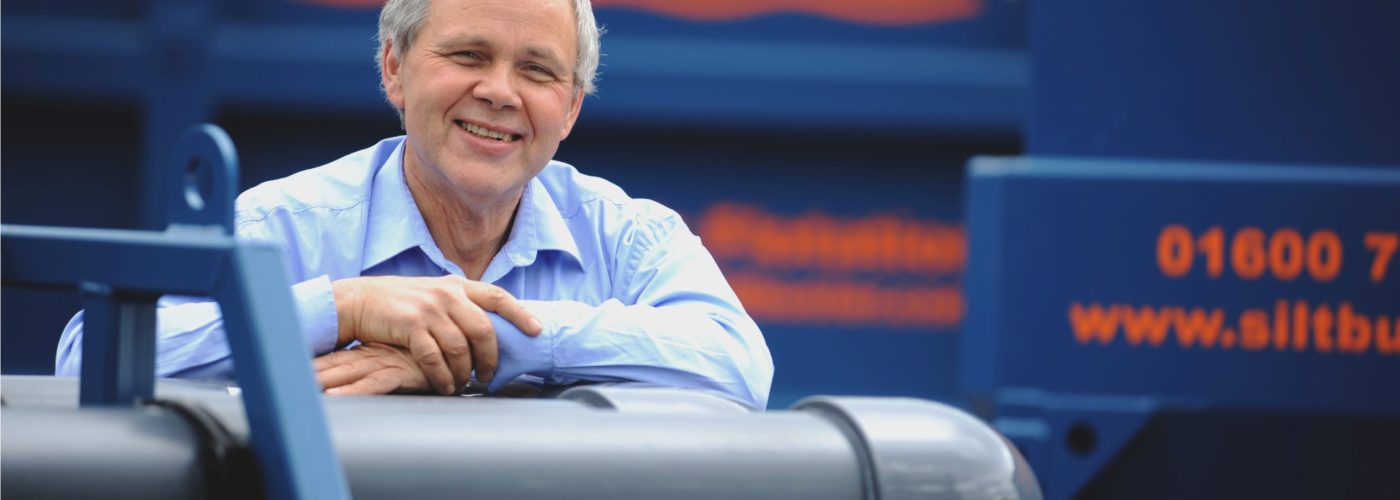Whether it’s through washing down wagons, shutes, skips and equipment, hydrodemolition, grouting, tunnelling or dealing with surface run-off – cementitious water (water with concrete in it) is one of the most common and challenging waters the construction sites have to contend with. Dr Richard Coulton, CEO of Siltbuster, and a leading authority of water treatment, outlines the 10 do’s and don’ts of dealing with concrete water on site.
By Dr. Richard Coulton, CEO of Siltbuster (Pictured)
- Don’t forget about it
Most construction workers are aware of the risks of silt and oil pollution, but still allow concrete wagons to wash out in leaky waste skips – yet concrete washwater on a volume by volume basis, has the potential to cause much greater harm than silt or oil
- Don’t under estimate it
Many think concrete water is acidic but on the contrary, it is very alkaline. The pH of concrete washwater is incredibly high – typically 12 to 13 on a scale which runs from 1 (acid) to 14 (highly alkaline) – making it highly damaging when discharged to the aquatic environment. The Environment Agency stipulates that the acceptable pH level for water to be released to the environment is 6-9 – and concrete water is way off this level
- Do take care
Only domestic oven cleaner has a higher pH and think of the health warnings that come with that! So site workers should treat concrete waters with respect – it’s nasty to handle and it’s NOT safe to stick it down the drain
- Remember, seeing isn’t believing
Even if site water looks visibly clean, if it has been connected with concreting works, it could still have a high pH and be environmentally very dangerous.
- Dilution is no solution
Many are tempted to simply dilute down the concrete wash water but dilution is neither practical nor cost effective. That’s because pH is a log scale. Every unit reduction in pH requires a 10-fold dilution with pH neutral water. So it would take 10,000 gallons to get 1 gallon of concrete washwater with a pH of 12 down to a pH of 8
- Tankering is not the answer
Giving someone else the problem to deal with, by tankering off site to a suitably licenced waste management centre for further treatment is an expensive solution. Typical tankering costs are in excess of £100/tonne. On say a larger site generating circa 30m3/day that amounts to around £100k per month in extra costs!
- Know the Trick of Treatment
In essence, concrete washwater needs to have its suspended solids removed and its pH reduced to an acceptable value.
-
Forget Acids
Neutralising the pH of concrete water by using mineral acids isn’t the answer. These are dangerous to handle, must be securely stored to minimise the risk to workers or accidental release into the environment. Surplus unused acid must be disposed of as hazardous waste, which is costly. Also precise pH control is difficult to achieve with mineral acids as it is all too easy to overshoot the target resulting in acidic water – which is equally polluting! Using these acids also creates “secondary pollutants” – sulphate and chloride – which are nasty for the environment. Similarly, Citric acid (fruit acid) isn’t the answer either as it comes with similar environmental, health and safety concerns and there is a risk of over dosing and acidifying the treated water.
- Gas works
The latest thinking is that carbon dioxide (which is mildly acidic when dissolved in water) is the best neutralising agent for concrete water. It is virtually impossible to acidify the water though overdosing plus, unlike acids, the by-products of neutralising the water with carbon dioxide are non-hazardous, and can actually be considered beneficial.
- Think Mobile
There are simple, easy to operate, mobile units which use carbon dioxide and which can be hired to temporarily treat concrete and other potentially polluting site waters.





